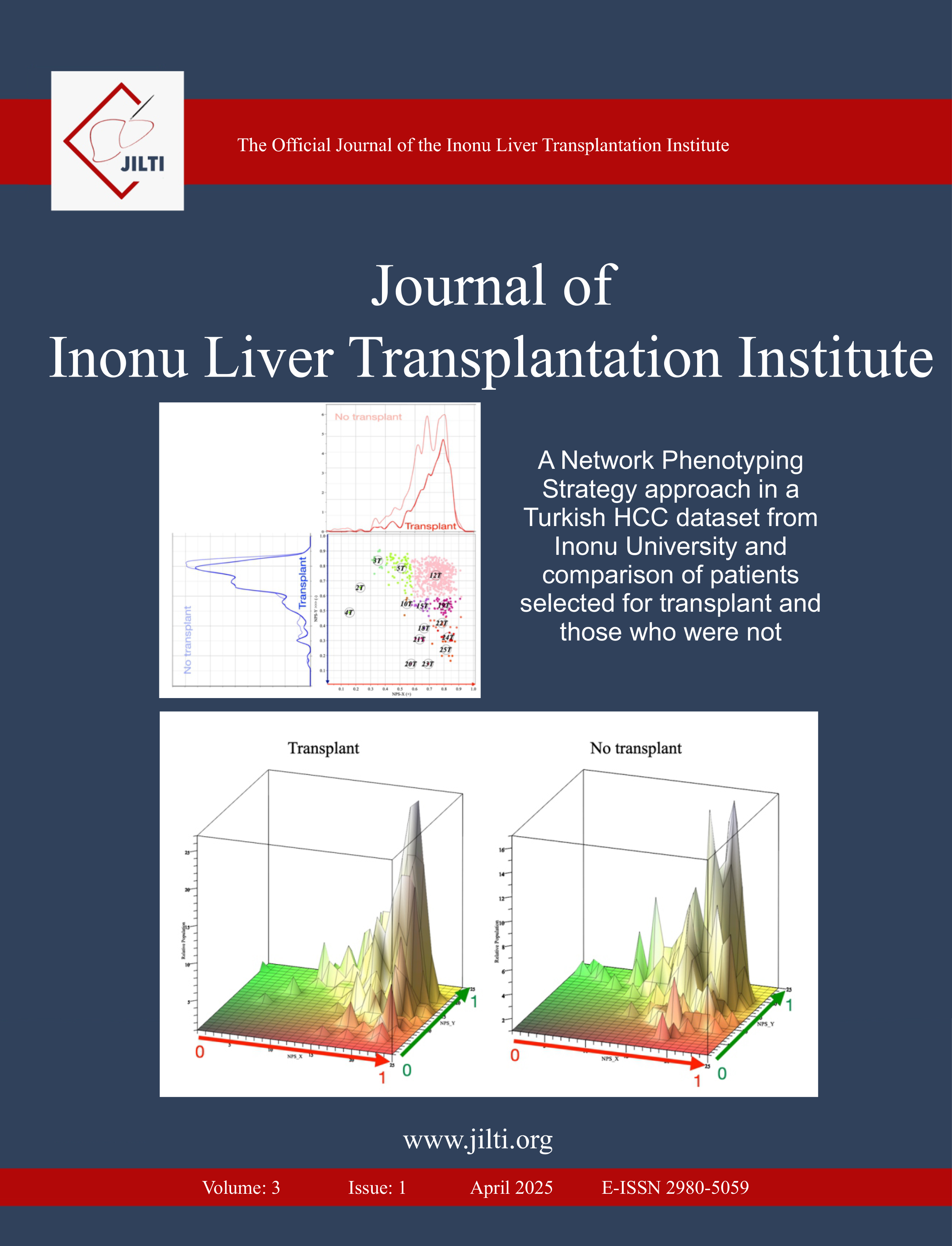Re-Transplantation in a Pediatric Patient with Hepatorenal Syndrome: A Case Report
Adem Tuncer1, Emrah Sahin1, Veysel Ersan1, Hasret Ayyildiz Civan2, Aysel Taktak3, Abuzer Dirican1, Bülent Unal11Department of General Surgery, Istanbul Aydin University, Istanbul, Türkiye2Department of Pediatric Nephrology, Istanbul Aydin University, Istanbul, Türkiye
3Department of Pediatric Gastroenterology, Istanbul Aydin University, Istanbul, Türkiye
Hepatorenal syndrome is common in patients with decompensated cirrhosis with severe ascites. Liver transplantation (LT) is the only viable option. Combined Liver-Kidney transplantation (CLKT) is recommended in cases with irreversible renal damage. Recovery of the renal functions following LT is common. We aimed to present a pediatric patient with biliary atresia with full recovery of renal functions after retransplantation for chronic rejection and biliary obstruction.
Living donor LT (LDLT) was performed on a 4-year-old female patient due to biliary atresia 6 years before the admission to our department. The patient suffered chronic anastomotic stenosis, cholangitis, and subsequent chronic rejection. On admission, the patient was severely icteric with massive ascites. The renal function was poor with no urine output and required hemodialysis. CLKT was planned but only LDLT could be performed due to deterioration of the patient’s condition. However, the renal function improved dramatically in the postoperative period and the kidney transplant was not performed. The patient had an uneventful postoperative period.
Hepatorenal syndrome, can resolve following LT. The patients who have a high risk of chronic liver failure should be determined before the LT procedure to plant a CLKT and to allocate insufficient organ resources.
Manuscript Language: English


